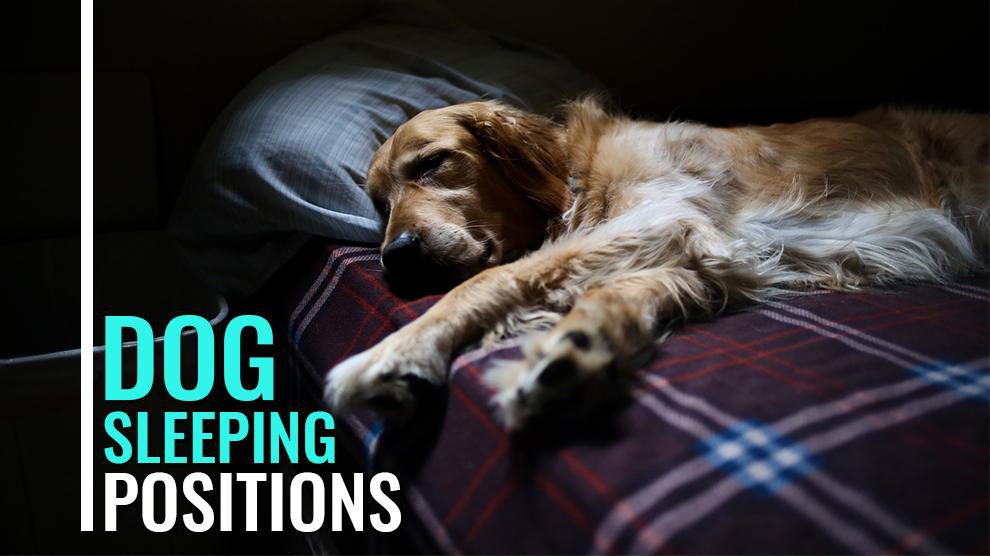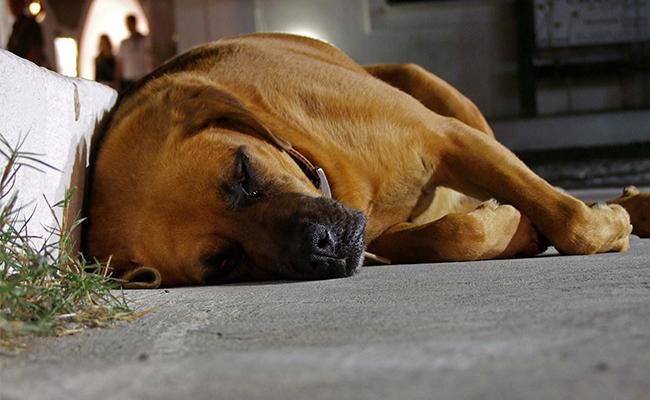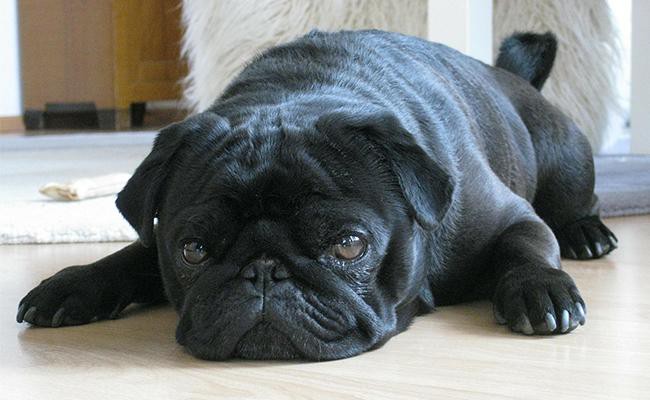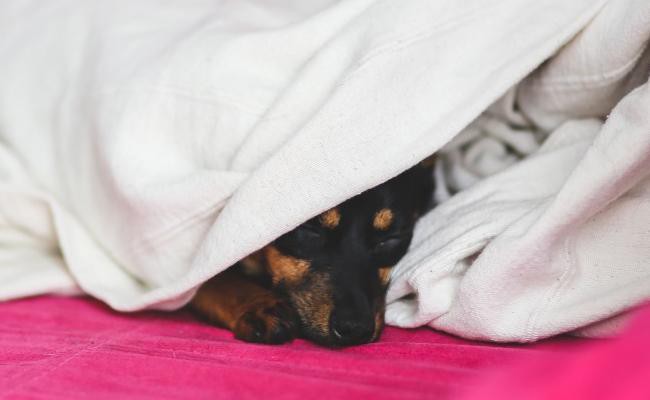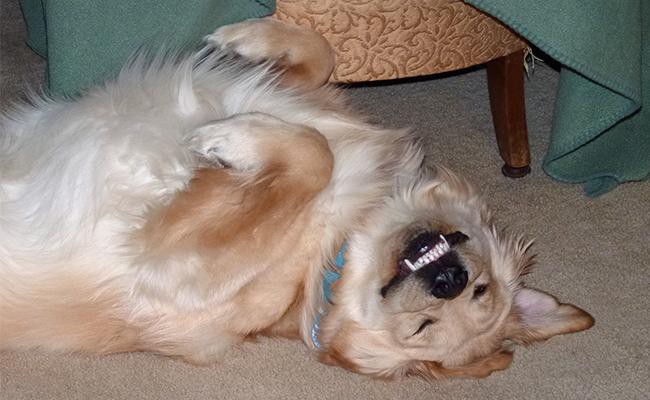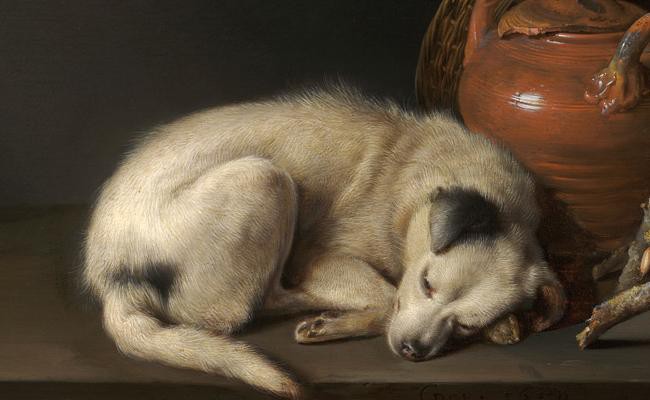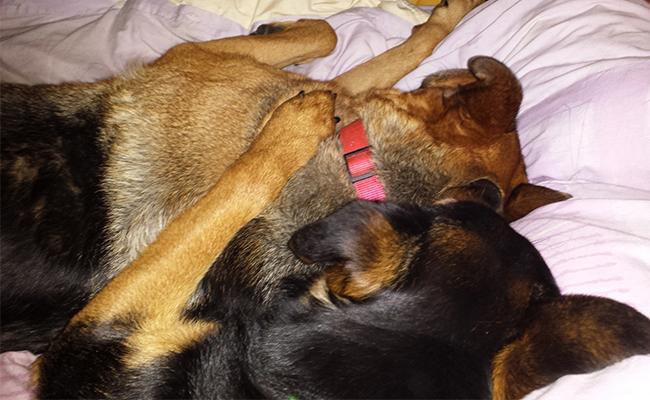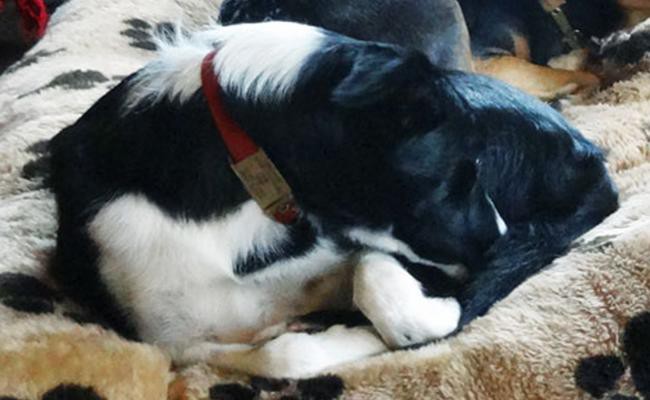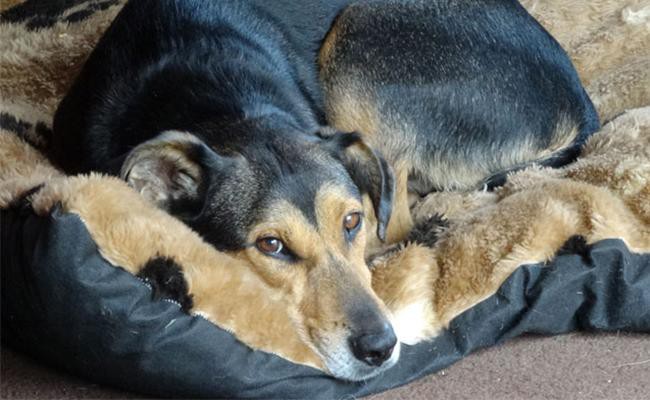- Dog Sleeping Positions Video
- The Side Sleeper
- The Free Fallers Or The Superman Pup
- The Burrower
- Belly Curler
- The Zombie Or ‘Crazy Legger’
- Half Mooner
- The Sphinxter
- Big Spooner Or Little Spooner?
- The Snugly Foxer Or ‘Curly Sue’ Position Or ‘The Fuzzy Bagel’
- Now, Turn Off The Lights, Let Me Sleep, Human!”
Dog Pregnancy Calculator And Timeline
We spend almost one-third of our lives sleeping (or attempting to do so) so our bodies can rest and reboot. They say that your sleeping postures can even benefit your life beyond the bed.
You will be amazed to know that your body is communicating even when you are asleep.
Dogs are definitely no different!
Watching the sleeping dog is one of the delights of sleep watching. There is so much to enjoy like paws paddling in a fantasy chase, limbs akimbo and eyebrows’ twitching.
The method that a pup sleeps might seem like an accident of sorts, but there is a method to their madness.
Let’s face the facts. Dogs are predisposed to sleep in quite some weird sleeping positions. Some of them can be quite hilarious!
Dogs bedtime positioning and the manner in which our canine friends’ snooze says a few things.
You might have wondered if your dog’s favorite sleeping position may reveal about his behavior or not.
Well, sleep and science have started to offer two-handed handshake nowadays. “Tell us your dog sleeping positions, and we will tell you something about him” – cliché is close enough to be true.
Sleep scientists have been studying the most common sleep patterns to get an inside scoop about what they imply.
If you have a dog, ‘What’s he doing right now? Take a guess: Most likely, the answer is ‘taking a nap’. Canine experts and Scientists are not certain why dogs nod off so much. But, it’s usually how they fritter at least half of their day.
A usual dog’s day consists of 50 percent sleeping, 30 percent dawdling when awake, and 20 percent being active.
But, dogs are flexible sleepers. They can easily get into a groove when there is action (like when there is someone at the door). They can go again to sleep when they are bored.
Working dogs also sleep less when they have a lot of work to do. Working dogs, like farm or military dogs, sleep less than those that have nothing to do.
Room temperature, his activity level and how your dog feels can affect his sleeping position. Paying attention to all those little details can actually tell you more about your dog.
Dogs have several reasons why they choose one sleeping position over another one.
The Side Sleeper
- Sleeping on their sides considered one of the best positions a dog can adapt. It is possible for some dogs to sleep like this for longer periods of time.
- This sleeping position conveys that a dog feels safe, secure, comfortable. They are not nervous to reveal they’re vital organs. Dogs have no worries in their mind. They feel complete trust with both your presence and his surroundings.
- This position is comfortable for them to reach deepest sleep stages. When a dog adheres to this position, sleep twitching or movements might appear more visible.
- Side sleepers are usually very calm, happy-go-lucky and fiercely loyal. They usually have a strong bond with their families.
The Free Fallers Or The Superman Pup
- Is it an aircraft? Or Superman? No, more appropriately, the Super-Pup! It’s just your pooch sleeping in one of the most adorable ways possible.
- Many dogs usually sleep on their stomachs, but the “super” pups are perhaps the cutest of them all.
- With all four limbs extended straight out and head level on the ground. If it wasn’t for the puddle of drool on your floor, they look like they’re flying through the air.
- This position is popular in puppies. It’s an easy position for a dog to wake up and jump right back into playing.
- Therefore, free fallers are definitely should be an entertaining, energetic, easy going canine!
The Burrower
- These dogs sleep with pillows, clothes, blankets… with anything that covers them up.
- These dogs generally need a bit more affection than usual. When they are tucked away, your clothes give them feelings of security and comfort.
- Sleeping with sheets or blankets is a great way to pacify apprehensive dogs.
- In the wild, most of the dogs would sleep in close quarters in a den. These may be inherited feelings from their time in the wilderness.
Belly Curler
The “Belly Curlers” will be sleeping on their tummy. They often with their front paws tucked backward.
Dogs that sleep in this position may not be relaxed. The muscles are tense and contracted. It will not enable them to drift into the REM stage of sleep.
This could mean they’re anxious or otherwise uncomfortable. It could also mean that your pooch is more energetic, adventurous. They would rather be playing than sleeping.
Tummy sleepers may react negatively to unfamiliar situations. They may be timid around new people, but they’re also gentle and lively when around their family.
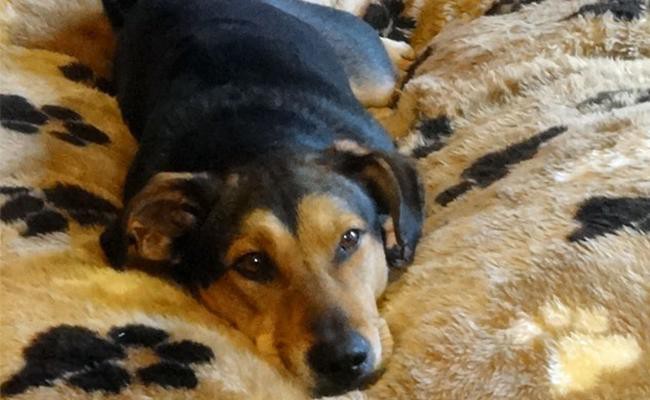
The Zombie Or ‘Crazy Legger’
- These dogs are usually sleeping on their back with their paws in the air. Their four legs are splayed up in the air like they just don’t care.
- You’ll most likely never see wolves in the wild sleeping on their backs. This sends a message of submission and vulnerability. With all four legs in the air, a dog’s stomach and organs are completely exposed. This again indicates a combination of yielding and defenseless attitude.
- If this is one of your dog’s favorite positions, then they are generally independent They will be super laid back and very comfortable in their environment.
- This may also mean that your dog is frazzled or feeling a bit too warm. This position allows them to cool down quickly.
- Be careful, though — while in this position, when your dog has his paws arched over his torso or chest, they try to tell you that they don’t want to be disturbed.
Half Mooner
- This can be a tricky position to know exactly what this means. But. it is when your dog is not curled up as tightly as snugly foxer.
- This position is reminiscent of their wolf ancestry. It has also been called “The Croissant”
- For younger dogs, it can just be a display that they’re ready to spring back onto their feet for any playtime opportunity. This makes them cozy on their stomachs.
- For less energetic or older pups, it could mean they’re feeling anxious or frazzled.
- This can be hard for dogs to fall into REM sleep as their muscles are contracted. Check out for anything that could be stressing your pooch out.
The Sphinxter
Have you heard of limestone statue “Great Sphinx of Giza” in Egypt? This is a mythical creature with the head of a human and the body of a lion? Well, that’s what this sleeping position reminds us.
With rear legs tucked in with front legs extended out in front, your dog can easily bounce up at a moment’s notice for a good sprint. It’s not the common or the most comfortable of the positions. This position indicates a short doze rather than settling down for the full sleep.
This position signifies that your dog is bothering about missing out on something. It the lightest of ways or prefers to be on call so as to bounce back into action with ease.
He may be suffering from “FOMO” – Fear Of Missing Out. He may want to know your whereabouts in case you can spend some time with him, so he cannot afford to miss a beat.
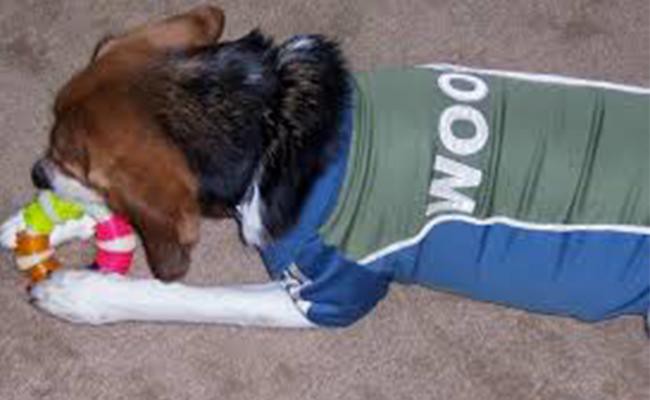
Big Spooner Or Little Spooner?
- A demonstrative sign your pooch is feeling warm. This affectionate position is perhaps the most adorable of them all.
- Puppies tend to toss a paw above fellow litter-mates or snuggle up next to them or snuggled up against you
- Don’t trust them; Given the chance, all dogs, big or small, indulge in a bit of spooning
- Big Spooner is one who initiates the position and invades more space. The ultimate in comfort and security, it’s a great position for affection. This is one way of showing their adoration to you, or a fellow pet or even a favorite toy.
The Snugly Foxer Or ‘Curly Sue’ Position Or ‘The Fuzzy Bagel’
- This is a curled-up position. Their paws will be happily tucked away underneath their torso. The tails will wrap all the way through until it touches the face.
- The “Curled Up” dog position is sleeping in a tight, unforgiving position. What he’s actually doing is protecting his vital body parts and conserving body heat.
- This is the most regular position amongst wild dogs and wolves. It allows them to protect their belly and share heat in a pack.
- This sleeping position may mean they are either concerned about something like strangers or a new environment. Sometimes, it indicates that they are feeling a bit cold.
- No need to worry, plenty of happy pups sleep this way! It’s just an extremely warm, comfortable way for them to nod off.
- Dogs that sleep in this position are easy-going and have sweet nature.
Now, Turn Off The Lights, Let Me Sleep, Human!”
NO, this is not another sleeping position.
There are few things more “awww”-inspiring and smile-inducing hilarious positions.
But, just like humans, sleep for dogs is a vital aspect of their health. You already have the old adage “let sleeping dogs lie”.
Do not worry about your dog’s sleeping habits. Keep in mind that it’s not unusual for dogs to spend most of their time taking naps.
There’s nothing odd about 13-15 hours of sleep. If you guess that your dog sleeps less or in odd positions or showing signs of despair, consult your vet right away.

